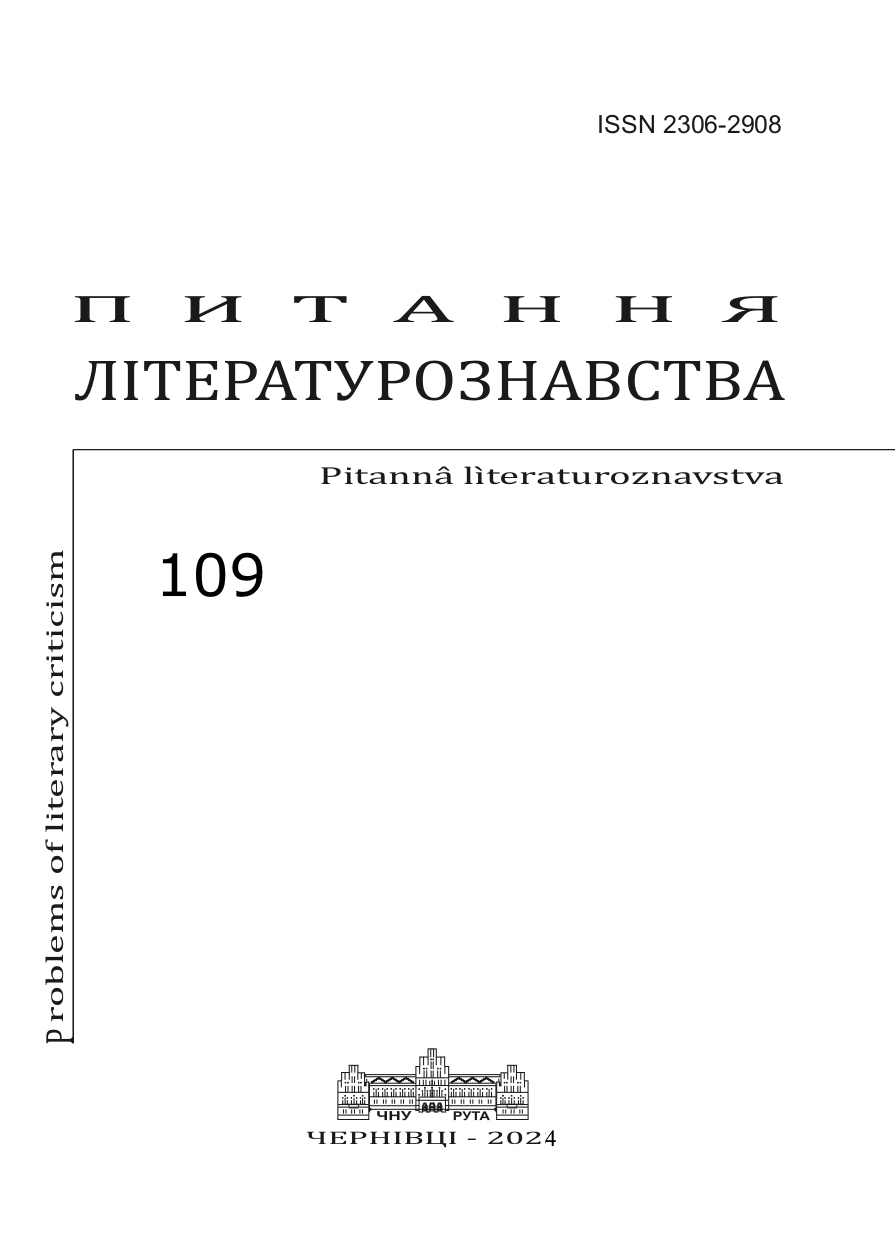Від притчевості до кінопритчі: специфіка кіноповісті І. Драча «Криниця для спраглих»
From “Parability” to a film parable: Specifics of the Cinematic Novella by I. Drach “A Spring for the Thirsty”
Author(s): Nataliia NikoriakSubject(s): Language and Literature Studies, Studies of Literature, Ukrainian Literature, Theory of Literature
Published by: Чернівецький національний університет імені Юрія Федьковича
Keywords: I. Drach; “A Spring for the Thirsty”; cinematic novella; movie parable; parability; intertext; intermedial code; genre continuity;
Summary/Abstract: Over the past decades, Ukrainian literary studies have been actively dealing with the interdisciplinary analysis of literary texts that are functioning on the verge of different artistic systems. This phenomenon may be explained by the tendency of art to the cross-genre transgression, which results in the complexity of text bounding principles, whereby the texts themselves are not only borrowed from other types of art or interpreted, but have also their codes creatively deformed. Today, however, the issue of genre continuity in the discourse of the poetics of intermediality is getting especially significant, and in particular, the issue of the specifics of the reception and transformation of literary genres in cinematography. The cinematic novella “A Spring for the Thirsty” (1964) by I. Drach is a text that is close in its parameters to the peculiarities of parable poetics, which has been fully implemented in the film by Y. Ilyenko (1965). Direct instruction and unambiguous didacticism (characteristic of the parable genre) are reinforced by philosophical reflection (from prologue to epilogue). The key character is portrayed primarily through the psychological motivation of his actions, with features of a certain idealization of the image in the dichotomous tandem of “parents and children”. In terms of parable specifics, particular emphasis has been laid on the tendency to special generalization, which is marked with the highest degree of conventionality, the principle of abstraction of the idea, and the universality of the chronotope. I. Drach actively uses dreams or visions (metaphorical or symbolic) that are montaged with the main events of the text, thus relaying old Levko’s inner experiences, sub-consciousness, fears, or hopes, while blurring the line between reality and unreality. The use of such duality in the narrative of the text, reinforced by the active insertion of intertextual and intermedial codes, offers a deep philosophical subtext inherent in the parable.
Journal: Питання літературознавства
- Issue Year: 2024
- Issue No: 109
- Page Range: 117-139
- Page Count: 23
- Language: Ukrainian

